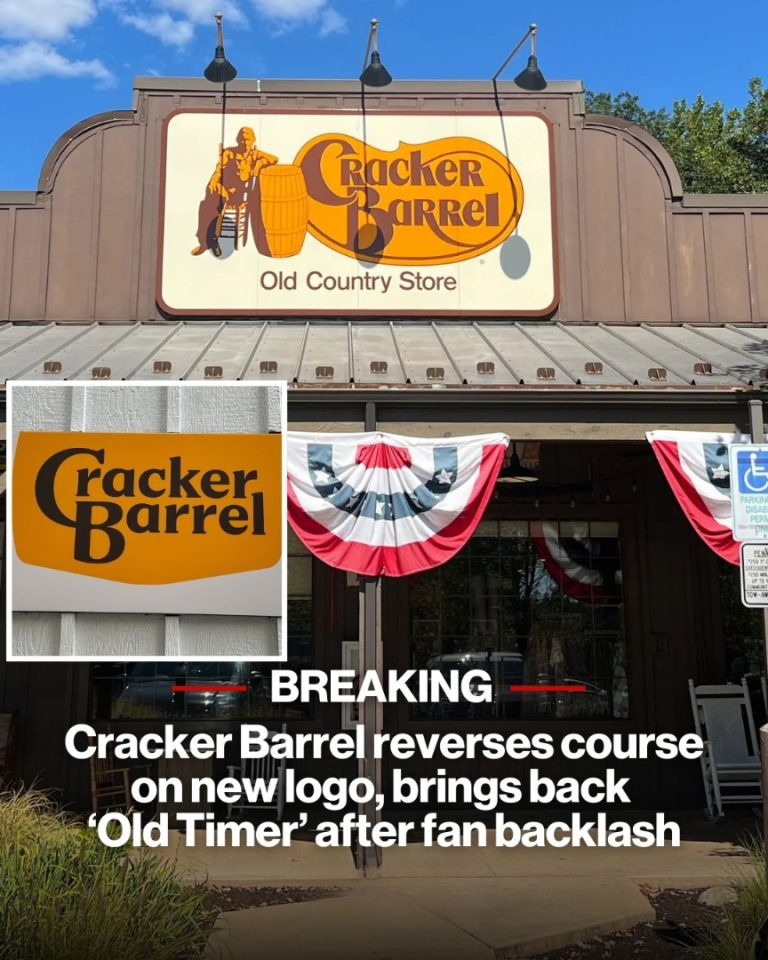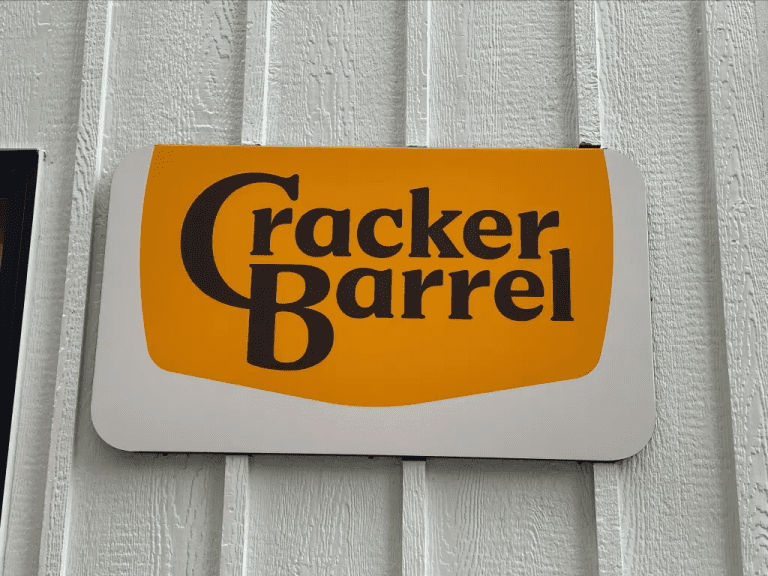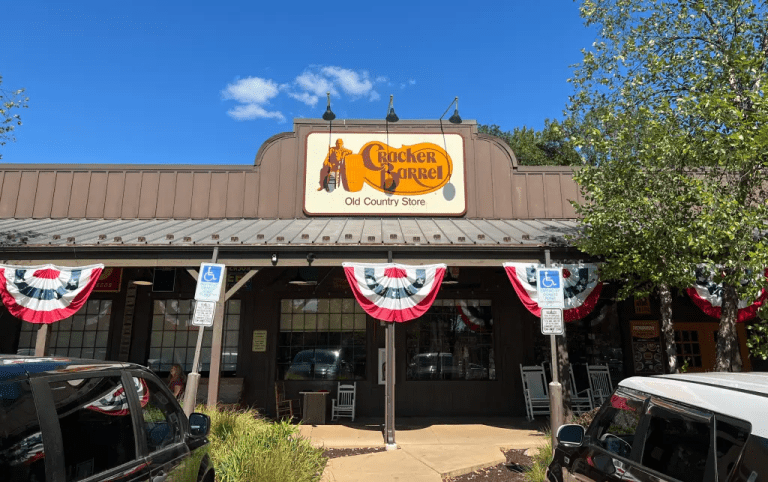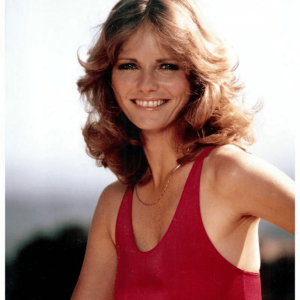When Cracker Barrel rolled out a redesigned version of its iconic logo, executives likely anticipated excitement and fresh energy. Instead, they ignited a social media storm. Fans of the Southern-inspired chain didn’t hold back, blasting the move as a departure from the restaurant’s roots. Within days, the backlash grew so intense that the company reversed course, promising to restore its beloved “Old Timer” logo.
In a public statement, Cracker Barrel acknowledged the misstep: “We thank our guests for sharing your voices and love for Cracker Barrel. We said we would listen, and we have. Our new logo is going away and our ‘old timer’ will remain.”

Trump Joins the Debate
The controversy quickly spilled into national headlines when former President Donald Trump weighed in. Posting on Truth Social, he urged the company to admit the error and embrace the original design. His words carried impact, declaring: “Cracker Barrel should go back to the old logo, admit a mistake based on customer response (the ultimate poll), and manage the company better than ever before.”
Interestingly, Trump’s comments didn’t just stir conversation — they moved the market. Shares of Cracker Barrel rebounded more than 6% after his post, offsetting nearly $100 million in market value the company had lost the prior week.
Video : Cracker Barrel scraps plan for new logo after backlash | LiveNOW from FOX
From Cozy Nostalgia to Controversial Rebrand
For decades, Cracker Barrel has embodied a warm, nostalgic Americana vibe. Think rocking chairs on porches, antique décor, and plates stacked with fried chicken, biscuits, and grits. Its brand identity wasn’t just a logo — it was an experience steeped in tradition.
So when the company stripped down its logo, removing familiar elements including the image of “Uncle Herschel,” customers felt something important had been lost. Rather than excitement, the redesign sparked skepticism. To many, the change symbolized a break with the past — a rejection of comfort and heritage.
The Viral Video That Amplified the Backlash
As if the outrage wasn’t loud enough, a viral parody video poured gasoline on the fire. An animated Uncle Herschel crooned a satirical tune repeating the now-infamous line: “Go woke, go broke.”
The video didn’t just target Cracker Barrel — it tied the company’s redesign to broader corporate controversies. From Bud Light’s partnership with Dylan Mulvaney to Nike’s ad campaigns with Colin Kaepernick, the clip lumped Cracker Barrel into a list of brands accused of abandoning tradition. With more than 600,000 views on X (formerly Twitter), the parody amplified the backlash beyond Cracker Barrel’s core customers.
Why Customers Reacted So Strongly

Why would a logo spark so much outrage? Because to customers, Cracker Barrel isn’t just a restaurant chain. It’s tied to road trips, family gatherings, and small-town charm. The logo was shorthand for an entire cultural experience.
When brands change something that feels deeply personal, fans see it as betrayal. Marketing history is full of similar stories — from Coca-Cola’s infamous “New Coke” in the 1980s to more recent redesigns that flopped because loyal customers simply didn’t want change. Cracker Barrel learned that lesson firsthand.
The Broader “Go Woke, Go Broke” Narrative
The logo fiasco also touched a nerve in a much larger cultural debate. Across industries, companies have faced heated reactions for campaigns perceived as politically or socially progressive. Target, Ben & Jerry’s, and Disney are just a few examples where public backlash has impacted brand perception and, at times, bottom lines.
Video : Cracker Barrel scrapping new logo, returning to old one after backlash
By scrapping its redesign and returning to the familiar, Cracker Barrel sent a clear signal: it values customer loyalty over experimentation with branding trends. In doing so, it sidestepped the risk of becoming another case study in the “go woke, go broke” narrative.
What’s Next for Cracker Barrel
Ironically, the controversy may benefit the company long term. By listening and responding quickly, Cracker Barrel reinforced trust with its customer base. Loyal fans now see their voices matter, which strengthens emotional bonds.
At the same time, the firestorm gave the brand more publicity than any marketing campaign could have bought. Millions of people who hadn’t thought about Cracker Barrel in years suddenly had an opinion about it. In marketing terms, that’s visibility money can’t buy.
Still, the challenge remains: how does a legacy brand stay relevant in a changing world while preserving the essence of what makes it beloved? Customers crave innovation, but they also crave familiarity. Cracker Barrel will need to walk that line carefully.
Conclusion: A Reminder of Brand Loyalty’s Power

The Cracker Barrel logo saga is more than a quirky design dispute. It’s a powerful reminder of how deeply people connect with brands and how quickly public opinion can shift corporate strategy. What began as a rebrand spiraled into a cultural flashpoint — and ultimately, a lesson in listening.
By restoring its Old Timer logo, Cracker Barrel didn’t just save an image. It safeguarded the trust, loyalty, and nostalgia of its fans. And in an era where customer connection is more valuable than any marketing gimmick, that loyalty may prove to be the most profitable design choice of all.


